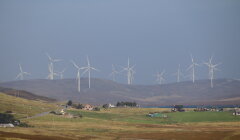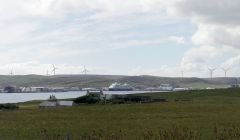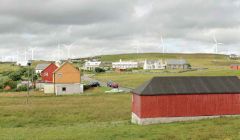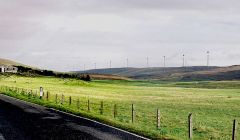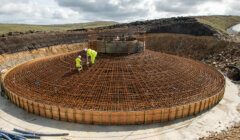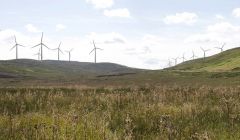Energy / Wind farm developer Peel Energy fails in bid for government support
PEEL Energy has confirmed that its two proposed wind farms in Shetland have failed to secure government support.
The Manchester based developer submitted bids to the UK Government’s latest Contracts for Difference (CfD) auction for its 17-turbine Beaw Field project in Yell and the 12-turbine Mossy Hill farm outside of Lerwick.
Like the 103-turbine Viking Energy wind farm, the two Peel developments – which both have consent – failed to secure government subsidy through the CfD process.
Peel Energy managing director Muir Miller said after the CfD results were announced on Friday morning that the company will “continue to actively work with stakeholders to find an alternative way of delivering these wind farms.”
“We’re disappointed that our Contract for Difference (CfD) bids to develop our Mossy Hill and Beaw Field Wind Farms in the Shetland Islands have been unsuccessful,” he said.
“These two renewable energy projects play an important part in Shetland’s future electricity supply with benefits to both the economy and communities and we’ll continue to actively work with stakeholders to find an alternative way of delivering these wind farms.”
The two proposed Peel wind farms need access to a subsea interconnector cable to be able to export energy – something that would likely have been given the green light if the Viking Energy project had secured CfD support.
Viking Energy and project backers SSE have both said they remain committed to delivering their 457MW wind farm, with an Ofgem consultation on Scottish Hydro Electric Power Distribution’s proposed contribution towards the proposed transmission link said to be “central” to the project’s progression.
The CfD scheme is government’s main mechanism for supporting the deployment of new low carbon electricity generation, with the aim of reducing the capital outlay for developers while minimising the cost to customers.
Become a member of Shetland News
The government said it provides projects with a “stable income while protecting consumers from paying increased support costs when electricity prices are high”.
Contracts are awarded in a series of competitive auctions – the lowest price bids are successful, which is said to drive efficiency and cost reduction.
Generators sell the electricity they produce on the wholesale market but receive a ‘top-up’ payment over the course of the 15-year contract.
The latest CfD round – the third one so far – was the first to include remote island wind projects. The next round will be in 2021.
The four remote island wind projects that did win subsidy were Costa Head Wind Farm, Druim Leathann Windfarm Limited, Hesta Head Wind Farm and Muaitheabhal Wind Farm. Two are in Orkney and two are based in the Western Isles.
A total of 12 renewable projects were given government support, providing capacity of 6GW.
The full list of successful projects can be found online here.
Become a member of Shetland News
Shetland News is asking its many readers to consider paying for membership to get additional features and services: -
- Remove non-local ads;
- Bookmark posts to read later;
- Exclusive curated weekly newsletter;
- Hide membership messages;
- Comments open for discussion.
If you appreciate what we do and feel strongly about impartial local journalism, then please become a member of Shetland News by either making a single payment, or setting up a monthly, quarterly or yearly subscription.



































